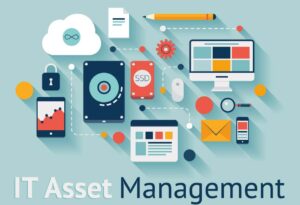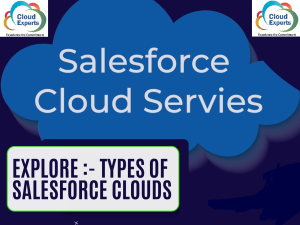Could you provide a description of an erection pump
Could you provide a description of an erection pump? Learn more about men’s health and the use of erection pumps by visiting this informative website:

Category management is a way of organizing and managing similar products or services together. It helps organizations make their procurement processes smoother, negotiate better with suppliers, and save money. In this guide, we’ll learn about the main principles of category management and how it can help your organization.
Category management in procurement is a strategic approach to organizing and managing goods and services. It involves grouping similar or related products into categories, allowing for a focused and efficient approach to procurement. Category managers are responsible for overseeing different categories of goods or services within an organization, ensuring efficiency, transparency, and visibility.
This approach may involve dividing products or services based on factors like value, supplier, type, or volume. It helps simplify management and sourcing processes. Sourcing decisions also play a role in determining how items or services are categorized. It’s important to note that implementing a sourcing strategy may take time and should not be underestimated.
Category management is an important part of procurement strategy. It helps organizations save money, manage suppliers, and improve supply chain efficiency. With category management, products and services are divided into different groups for better organization and strategy development.
This approach also strengthens relationships with suppliers based on different categories. Category management involves planning based on data, controlling inventory, and setting prices to improve sales and operations.
To develop a category strategy, market research and analysis are used to create a plan. It’s important to consider the future and make decisions on suppliers and sourcing processes. The category management process should be reviewed regularly, at least once a year.
A Category Management plan includes:
Understand your supply market and product positioning to optimize spending and create opportunities. Having a deep understanding of the supply market will guide your category management strategy and help you make decisions on categorization.
Group products into categories based on their similarities, nature, or source. For example, office supplies like envelopes can be categorized under “stationery” or “pre-printed envelopes.”
Regularly review the possibility of partnering with suppliers in high-value or high-risk categories. This evaluation should be done at least once a year.
Utilize appropriate technology to manage your categories. Using digital category management software provides visibility and efficient management.
Consider that changes in business direction can impact your category strategy. Organizational policies, strategies, external factors, and risk uncertainties may influence your category management approach.
Ensure that your suppliers can meet the demands of the new category strategy. Supplier management and relationship development are key aspects of category management, and it is important that suppliers are adequately equipped to deliver.
Evaluate the impact on suppliers if the new strategy is not implemented. Anticipating supplier risks and having contingency plans in place is essential. Strategies should be adopted to address uncertainties or failures on the supplier’s part.
Supplier relationships: Building strong relationships with suppliers is crucial for successful category management. Working closely with a select group of suppliers in each category can lead to better outcomes.
Supplier evaluation: Regularly evaluating and assessing suppliers is important for continuous improvement and maintaining good relationships.
Market analysis: Understanding market dynamics, competition, and external factors is essential for effective category management. This helps identify potential risks and opportunities.
Stakeholder management: Identifying and managing stakeholders at different levels is critical for the success of the category management strategy.
Sustainable and ethical procurement: Incorporating sustainability and ethical practices into the category management strategy ensures responsible decision-making by both buyers and suppliers.
Team leadership: Effective leadership and management are needed to coordinate and lead the category management team, as well as manage relationships with suppliers and stakeholders.
Category management and strategic supplier relationship management are closely interconnected. Category management encompasses the management of suppliers across different levels, which in turn facilitates effective supplier relationship management. By establishing a strong and strategic supply chain, businesses can derive value from efficient supplier relationship management, ensuring the lowest total cost of ownership (TCO) and maximizing potential return on investment (ROI).
Efficient category management is vital in achieving an effective supply chain system. Categories enable managers to work with a select number of suppliers, enabling better vendor or supplier management and relationship-building.
Review and streamline spending categories: Use standard classification systems to organize spending areas into specific categories. Consolidate and simplify category definitions to manage them more effectively.
Improve data visibility: Engage stakeholders and create analytics dashboards to track data from suppliers and across the organization. Monitor category-specific benchmarks and key performance indicators regularly.
Assign a dedicated manager for indirect spending: Streamline purchase order systems and control small purchases to prevent unauthorized spending. Manage categories like travel, facilities, office supplies, marketing, professional services, and IT separately.
Consider contract renegotiation: Build strong relationships with suppliers and negotiate better terms. Focus on categories where the buyer has more power. However, be aware of market realities that may affect negotiation outcomes.
Conduct HS code audits: For categories exposed to tariff risks, review product codes to avoid non-compliance penalties and unnecessary tariff duties. Find a balance between using a few codes across multiple stock-keeping units (SKUs) and using specific codes.
Include risk assessments and market intelligence: Incorporate market intelligence in category planning to identify potential challenges early on. Utilize digital tools and data sources for enhanced supply chain visibility. Develop scalable scorecards to assess risks in each spending category.
By following these best practices, organizations can optimize their category management and achieve better outcomes.
Category management is important for organizations to manage their procurement items effectively. It helps with strategic sourcing and building good relationships with suppliers. By implementing category management, organizations can track their spending and ensure accountability.
There are several benefits of category management, particularly for large organizations with significant procurement expenses. It streamlines the procurement process and provides control over purchasing items. It is crucial for organizations to embrace and adapt category management strategies to enhance the efficiency and effectiveness of their procurement system. The strategy involves managing procurement items in smaller categories, which improves visibility and transparency.
One Software That Offers All In One Solution For RFx & E-Auctions India’s Most Decorated and 100% Secure Online e-Auction Platform That Makes ProVen The Best Supplier Relationship Management (SRM) Solution.
Move away from spreadsheets and manually compare quotations and information from vendors. Cloud Expert’s eRFX solution – ProVen lets you manage all your RFIs, RFQs, RFPs, RFTs, and Auctions, in one system.
Deploy reverse auction strategies to maximize savings and innovate procurement operations.
One Software That Offers All In One Solution For RFx & E-Auctions India’s Most Decorated and 100% Secure Online e-Auction Platform That Makes ProVen The Best Supplier Relationship Management (SRM) Solution.
Move away from spreadsheets and manually compare quotations and information from vendors. Cloud Expert’s eRFX solution – ProVen lets you manage all your RFIs, RFQs, RFPs, RFTs, and Auctions, in one system.
Enhance your most normal obtaining process, eRFX, and contract talks in the quickest way possible. Leverage ProVen&apos’s intelligent APIs to concentrate all obtaining information onto a solitary stage and improve on the most confounded processes with quicker direction.
Open the window to make your spending analysis more astute with ProVen. Open fundamental examples by solidifying a lot of spending Data and assist your Procurement Team to eliminate blind expenditures, screen conduct, and gain further bits of knowledge.
You can link your processes and technology using ProVen’s smart APIs. This will make different systems work well together. You don’t need to collect information from various tools anymore. You can make your procurement system better.
Say Goodbye to misplaced and mismanaged paper contracts with ProVen’s Contract Management Software. You can say goodbye to risks and lost savings too. It helps you to handle all types of contracts easily, securely, and without using paper and ink. It simplifies the creation, execution, and management of your contracts.
Save up to 20% of your procurement budget by reducing unplanned or uncontrolled spending. ProVen can help you manage your tail spend and find more savings by giving you a clear view of your spending.
See where you spend money in your supply chain and find ways to save. Procol’s smart dashboards show you information about how much products cost, details about suppliers, and trends in prices. You can use this information to cut down your expenditure.
Connect with an expert who can share more about our solutions and answer any questions you have.
Could you provide a description of an erection pump? Learn more about men’s health and the use of erection pumps by visiting this informative website:
There are five primary reasons for the development of heart failure. the healthy man blog to learn more about the main causes of impotence and
Does erectile dysfunction hinder the ability to masturbate? Certainly! Here’s a phrase that describes the main point of the article: “Discover the truth about erectile

IT Asset Management IT Asset Management – What Is It? IT Asset Management (ITAM) is a way to keep track of all your IT stuff,

Top 3 Ways to Optimize Procurement A study by Riskmethods found that 79% of companies experienced supply chain disruptions, resulting in a loss of 4%

Why is 3-Way Matching is Important in Purchasing? 3-way matching is an important process in purchasing to ensure accuracy, completeness, and compliance of invoices with

What is Indirect Procurement? 5 ThingsYou Need To Know What is Indirect Procurement? I talked about it with Procurement Expert Richard Beaumont on The Supply

RFI Vs RFP Vs RFQ In today’s business world, there are many options for enterprises looking to switch immigration providers. They consider factors like service,

5 Reasons Why eAuctions Drive Is Better Savings eAuctions are online discussions between a buyer and a group of sellers. Procurement specialists can use eAuctions

What is Category Management in Procurement? Category management is a way of organizing and managing similar products or services together. It helps organizations make their

17 common challenges in procurement management and their solutions Procurement can be complicated and challenging to manage due to various factors such as regulations and

The Ultimate Guide to the Top 16 Procurement KPIs. Nowadays, businesses want procurement teams to do more than just save money. They want them to

ProVen Revolutionary Procurement Software Revolutionary Procurement Software : Revolutionary procurement software is here! It’s advanced, flexible, easy to use, affordable, highly secure, and can be

ProVen The Next Generation Procurement & Vendor Management Solution – SRM Procurement Challenges: The current purchase process is both inefficient and lacks transparency. Floating RFQs

4 Benefits You Need To Keep In Mind While Choosing Right Salesforce Partner Salesforce is a strong stage that can assist organizations with smoothing out

6 Reasons To Hire Salesforce Developer For Your Business Is it safe to say that you are here since you need to find the reason

5 Major Benefits of Hiring a Salesforce Consultant What is the Market Share of Salesforce? Salesforce’s worldwide portion of the overall industry and income keeps

5 Ways to Effectively Manage Ideas on Salesforce Experience Cloud The thought creation process is an excursion with many exciting bends in the road. Thoughts

5 Salesforce Integrations That Can Transform Your Daily Business Operations If we discuss Salesforce, there are regions in which it adds to the business. From

Salesforce Marketing Cloud – 8 Ways to Maximize Your Marketing Potential In the present quick-moving advanced world, organizations should stay aware of the most recent

Sales Cloud Related 7 Key Features You Must Know What is Salesforce Sales Cloud? With the steadily expanding request, there is a consistent requirement for

4 Major Points How Salesforce Ensure Data Security and Privacy? Introduction These days information security and privacy is the main pressing issue for everybody and

6 Major Insights How Salesforce Implementation Can Improve Your Sales Process? Introduction Throughout the long term, Salesforce has been thought of as one of the

10 Leading CRM Software That Will Rule In 2023 Introduction Customer relationship management software is the core of any developing business these days as all

The 15 Types Of Clouds In Salesforce & Their Features Introduction Salesforce, as a comprehensive Customer Relationship Management (CRM) platform, offers a wide range of

5 Factors – Why Salesforce Is The Best And Desired CRM Solution? Introduction Salesforce has earned a reputation as one of the leading Customer Relationship

Major 6 Reasons Why Salesforce Is In So Much Demand These Days Introduction We have witnessed that Salesforce is in demand and got popularity in

6 reasons why Salesforce used AI in its CRM offerings. Introduction Salesforce, the market leader in Customer Relationship Management (CRM), has harnessed the power of Artificial Intelligence

Major 6 Future Outlook For Salesforce In The CRM Market? Introduction Salesforce has established itself as the dominant force in the Customer Relationship Management (CRM)

Top 6 Benefits Customer Will Get From The Salesforce AppExchange Introduction Salesforce’s AppExchange is an extensive marketplace of applications and integrations that provides customers with

Major 6 Industries are benefited the most from Salesforce’s CRM Solutions Introduction Salesforce’s Customer Relationship Management (CRM) solutions have proven to be valuable across a

6 Reasons Set Salesforce Apart From Other CRMs Introduction In a crowded market of Customer Relationship Management (CRM) providers, Salesforce has managed to carve out

Top 5 Reasons for Salesforce’s Market Leadership Market Share Of Salesforce Introduction Salesforce has emerged as the market leader in Customer Relationship Management (CRM), revolutionizing

Top 5 Reasons and The Journey Of Salesforce For Becoming The No 1 CRM Introduction In the highly competitive world of Customer Relationship Management (CRM),

How Is The Future On Salesforce? Introduction : In today’s fast-paced digital landscape, businesses are constantly striving to stay ahead of the competition and maximize

19 Major Benefits Of Using Salesforce CRM? Introduction: In today’s highly competitive business landscape, maintaining strong customer relationships is crucial for success. That’s where Salesforce,

What Exactly Does Salesforce Do? Introduction : Salesforce is a leading Customer Relationship Management (CRM) platform that offers a wide range of cloud-based services to
Epic Match: MI vs. SRH – T20 Titans’ War in the IPL 2023 In the T20 Indian Premier League (IPL), the Mumbai Indians (MI) and

6 Ways CRM Helps You Grow Your Business Customer Relationship Management (CRM) software can play a crucial role in helping businesses grow and thrive. Here are